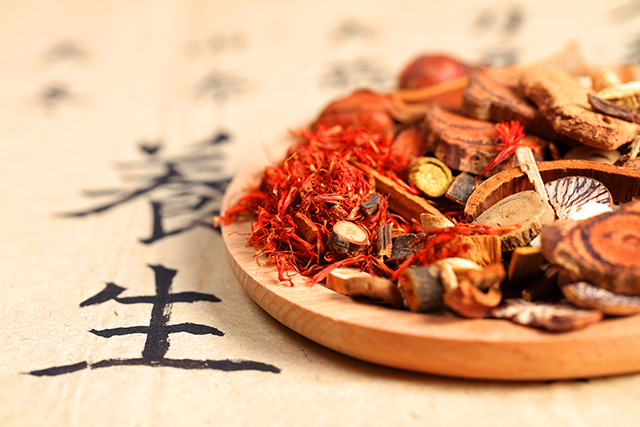HERBS BEAT COVID: Taiwanese study: Two TCM formulations significantly reduce progression of COVID-19

A study performed in Taiwan found that two kinds of Traditional Chinese Medicine (TCM) formulations significantly reduced disease progression in patients infected with the Wuhan coronavirus (COVID-19).
The study, whose findings are set to be published in Pharmacological Research in October 2022, was a joint effort by multiple researchers from different Taiwanese institutions. It ran from May 1, 2021 to July 26, 2021 and involved 548 patients.
The study participants were given the TCM formulations NRICM101 and NRICM102, which were both developed by the Taiwanese National Research Institute of Chinese Medicine. NRICM101 was formulated in 2020 and became the first TCM treatment to be legally sold in more than 50 countries as a COVID-19 treatment.
Ten herbs comprise NRICM101, namely:
- Scutellaria root
- Heartleaf houttuynia (Houttuynia cordata)
- Mongolian snakegourd (Trichosanthes kirilowii) fruit
- Indigowoad (Isatis tinctoria) root
- Magnolia (Magnolia officinalis) bark
- Peppermint (Mentha × piperita)
- Fine leaf Nepeta
- Mulberry (Morus) leaf
- Saposhnikovia divaricata root
- Baked liquorice (Glycyrrhiza glabra) root
NRICM102 was later formulated based on the earlier NRICM101, with the former’s additional ingredients supporting the respiratory and immune systems. According to the Taiwanese institute, NRICM102’s revised formulation specifically focuses on patients severely ill with COVID-19.
The October 2022 study found that COVID-19 patients treated with both NRICM101 and NRICM102 “were at significantly less risk of [intensive care unit] admission or death, compared to those who were not treated with the herbal formulas.”
The researchers chose 246 patients without hypoxia (low oxygen levels in the blood) and 302 patients with normal blood oxygen levels. They then divided both into two groups, and observed them for a period of 30 days.
Half of the patients with normal blood oxygen levels received NRICM101, while the remaining 151 received normal care only. Meanwhile, 123 patients with hypoxia were given the NRICM102 formulation while the other half did not.
In the normal blood oxygen level group, none of the patients given the TCM formulation progressed to severe COVID-19. Meanwhile, 14 patients from the group who did not receive NRICM101 saw their COVID-19 infections worsen.
A similar observation was noted in the hypoxia group. Following the observation period, the use of the later NRICM102 was associated with a 74 percent reduction in the relative risk of death. (Related: Medicinal herbs effectively treat thousands of covid-19 patients in Chinese hospitals.)
Herbal medicine can be used as preventative treatment for high-risk individuals
According to NRICM Deputy Director Chiou Wen-Fei, two herbs used in the NRICM101 formulation play a key role in addressing COVID-19 infections. She explained that H. cordata and Scutellaria root serve to eliminate SARS-CoV-2, the pathogen responsible for COVID-19.
Chiou emphasized, however, that these two herbs taken by themselves alone are not as effective as the multi-herb formula.
Back in August 2021, the institute issued several clarifications regarding the use of NRICM101.
According to the NRICM, the herbal medicine can be used as a preventative treatment for high-risk individuals. It explained: “Due to COVID-19’s highly infectious nature, proactive prevention in high-risk individuals is recommended. NRICM101 can be prescribed both as a treatment for patients with COVID-19 – asymptomatic, mild or severe – and as prevention for high-risk individuals from infection or to reduce symptoms if infected.”
The institute also stated that NRICM101 “should not be consumed by healthy individuals or those who are at low risk of COVID-19 infection.” It warned of “minor side effects – such as indigestion, diarrhea and fatigue – in children with [a] weaker body constitution, [the] elderly and those with sensitive digestive tracts.”
NRICM Director Dr. Su Yi-Chang lauded TCM during the 14th Taipei Traditional Chinese Medicine International Forum.
According to him, TCM differs from its Western counterpart for two reasons. First, its formulations are designed to be multi-targeted compared to Western drugs that target one symptom at a time. Second, Chinese medicine uses lower dosages – resulting in fewer side effects and a smaller chance of drug resistance.
Watch this video explaining the three concepts of “jing,” “qi,” and “shen” that play a huge role in TCM.
This video is from the NinjaAlex420 channel on Brighteon.com.
More related stories:
Taiwan’s coronavirus response caught the world’s attention – and the jealousy of a neighbor.
Traditional Chinese medicine as a complementary treatment for mild and serious diseases.
Investigating the efficacy of TCM extraction methods to deliver drug-like molecules.
Sources include:
<!–
–>
This article has been archived for your research. The original version from Natural News can be found here.



